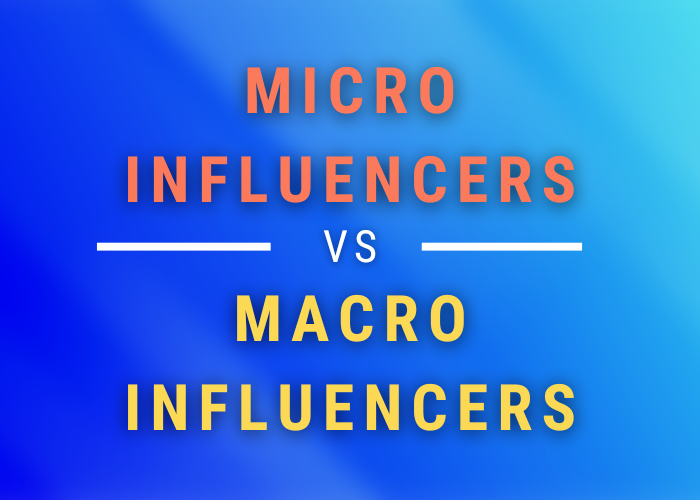Monday, August 4, 2025
Micro-influencers vs. macro-influencers: what strategy for your brand?
Brands

Influencer marketing continues to evolve, and with it, the profiles of content creators. For brands, the choice between collaborating with micro-influencers or macro-influencers is becoming a truly strategic decision . These two categories offer very different advantages, and the right choice largely depends on the brand's objectives , its budget , and its target audience .
In this article, we compare the two approaches to help you define the most relevant influencer strategy for your brand.
In this article, we compare the two approaches to help you define the most relevant influencer strategy for your brand.
Understanding the fundamental differences
Micro -influencers are typically creators with between 1,000 and 100,000 followers , often specializing in a niche. They cultivate a close and authentic relationship with their community.
Macro -influencers , on the other hand, have more than 100,000 followers or even several million. Their content reaches a much wider audience , and they often benefit from celebrity status or strong media recognition.
Macro -influencers , on the other hand, have more than 100,000 followers or even several million. Their content reaches a much wider audience , and they often benefit from celebrity status or strong media recognition.

The benefits of micro-influencers
What makes micro-influencers so strong is their ability to engage . Their interaction rate is often higher than that of more well-known influencers. They are perceived as more authentic , and their recommendations carry a lot of weight with their community.
They are also more accessible for small brands or targeted campaigns , with more reasonable budgets.
They are also more accessible for small brands or targeted campaigns , with more reasonable budgets.
The advantages of macro-influencers
Macro -influencers allow you to quickly reach a large audience , which is ideal for product launch , mass awareness or branding campaigns .
They also offer potential international reach and broadcasting power that is difficult to match.
They also offer potential international reach and broadcasting power that is difficult to match.
Which strategy for which brand?
It all depends on your campaign goals :
- If you're aiming for conversion , local engagement , or a targeted launch , micro-influencers are your allies.
- If you are looking to accelerate your notoriety and establish your brand on a large scale, macro-influencers are more suitable.
Finally, your budget and internal resources to manage multiple partnerships also influence this choice.
Towards a hybrid approach?
More and more brands are adopting a hybrid strategy , combining the reach of macro-influencers with the engagement of micro-influencers.
This approach allows you to diversify channels , segment messages and optimize performance at each level of the conversion funnel.
This approach allows you to diversify channels , segment messages and optimize performance at each level of the conversion funnel.
Summary
There’s no “one-size-fits-all” in influencer marketing—only strategic decisions.
Micro-influencers deliver authenticity, high engagement, and precise targeting, perfect for brands looking to connect closely with audiences.
Macro-influencers bring broad visibility, fast reach, and brand power, ideal for large-scale campaigns.
The best approach? Often a smart combination of both, tailored to your marketing goals and influencer maturity level.
